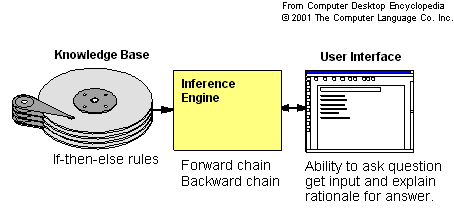Introduction
Information systems are designed by business organizations to enable employees perform their tasks effectively and improve general organizational performance. Most business organizations have different information requirements. For instance, senior managers require information to conduct business planning while middle managers require comprehensive information to assist them in controlling and monitoring business activities. Other junior employees also require information to perform their duties effectively. This compels business organizations to use different information systems, which operate at the same time. The following are the types of information systems that I would apply in my business organization.
- Office information system
- Management information system
- Transaction processing system
- Expert system
- Decision support system.
Analysis of Information Systems
The first information system that I would use in my business organization is office information system (OIS). It involves installation of software and hardware equipment that facilitate communication within organizations. OIS enables departmental heads to communicate with employees effectively. It facilitates a variety of business activities like creation and distribution of documents and also dissemination of messages. The system is used by all personnel including managers and junior employees. It uses a variety of software among them graphics and spreadsheets to help employees carry out their duties effectively. The first benefit of the system is that it facilitates exchange of information among employees while the second benefit is that it ensures safe storage of information. However, its drawback is that it requires high technological knowledge to work with (Davoren, 2012).
The second information system that I would apply in my business organization is management information system (MIS). This type of information system produces timely, accurate and organized data that can be used by managers and other employees to make decisions, supervise tasks, solve problems and monitor business progress (Oz, 2008). MIS is comprised of a transaction processing system, which performs different tasks. For example, it keeps details of goods sold and handles customer accounts. It generates information that managers and other employees require to perform their tasks. The first benefit of management information system is that it helps managers to make important decisions. The second benefit is that it provides data that can be used to facilitate business expansion. Its first drawback is that it is affected by absence of employees since it requires regular monitoring. The second drawback is that it is expensive to install.
The third type of information system that I would apply in my business organization is transaction processing system (TPS). This type of information system is responsible for capturing and processing information, which is produced during business activities that take place everyday. A transaction refers to business activities such as payments or deposits made by employees. A transaction processing system keeps business records such as payments made to customers and also maintains records. The first benefit of the system is that it handles many operations at the same time, hence it increases efficiency. The second benefit is that it reduces the amount of work done by employees. Its first drawback is that it is not suitable for small business organizations. The second drawback is that it is prone to security breaches.
The fourth type of information system that I would apply in my business organization is an expert system. An expert system has the ability to function like a human expert. It then imitates the reasoning of human beings and their processes of making decisions to assist individuals with little expert knowledge. The system is made up of inference rules and a knowledge base. It is designed to help employees at all levels in decision making processes but is mostly used by the junior ones to perform their duties. The system also plays an important role in solving different business problems.
An expert system is closely related to artificial intelligence, which applies knowledge of human beings on computers. Its first benefit is that it captures expert knowledge, which is not easy to capture. The second advantage is that it increases quantity and quality of production. Its first drawback is that it is costly to install, especially for small businesses while the second drawback is that it cannot solve ambiguous problems because it is driven by a menu. The third drawback is that it cannot provide solutions to all problems that human beings can solve. Below is an image of an expert system.

The fifth information system that I would apply in my business is a decision support system (DSS). This system is used in business organizations to assist employees in decision making processes since numerous situations that require immediate decisions arise from time to time. It uses data obtained either from internal or external sources. The benefit of this information system is that it enables business organizations to avoid crisis since decisions can be made faster. Its second benefit is that managers can create models of factors that influence certain decisions. However, it has a drawback since crucial decisions may be affected in case the system fails.
References
Davoren, J. (2012). Types of Information Systems in an Organization. Web.
Oz, E. (2008). Management Information Systems. New York: Cengage Learning.